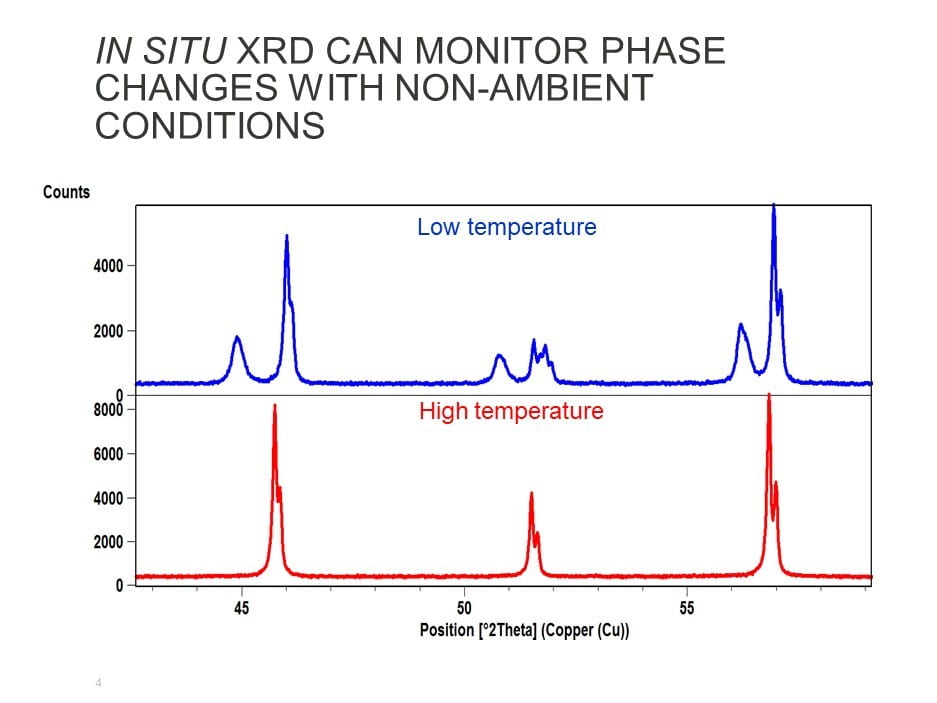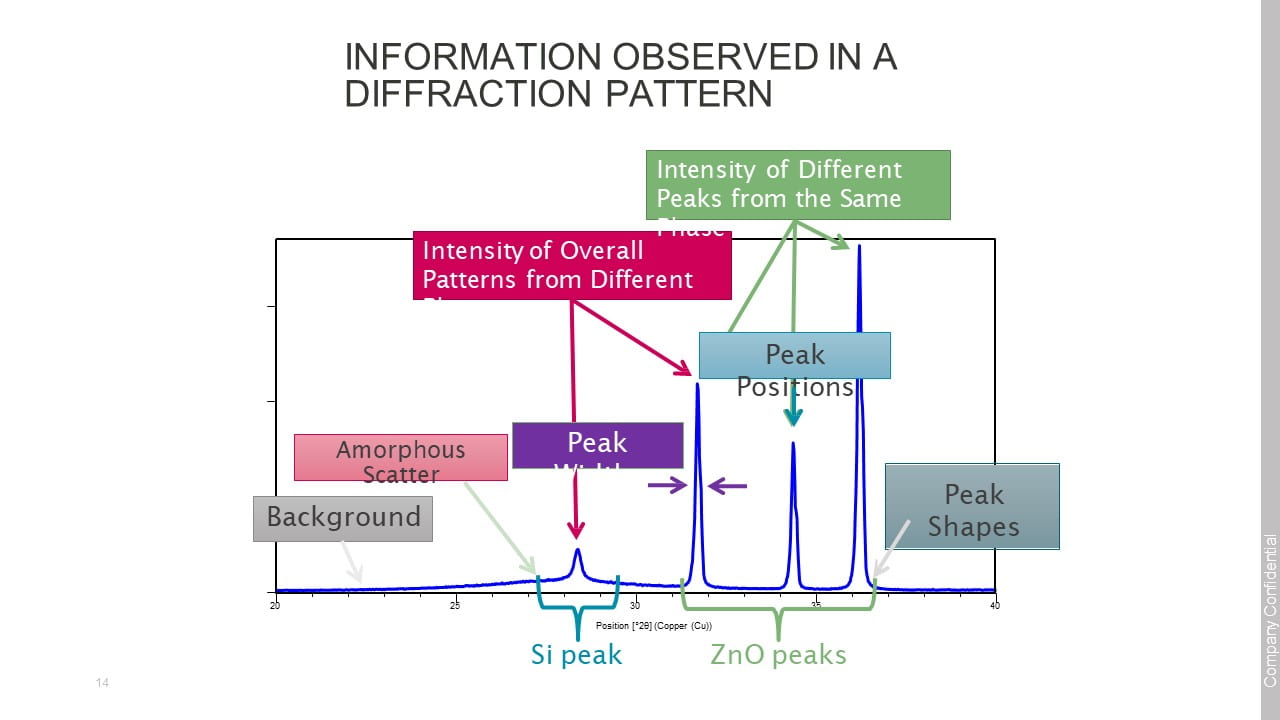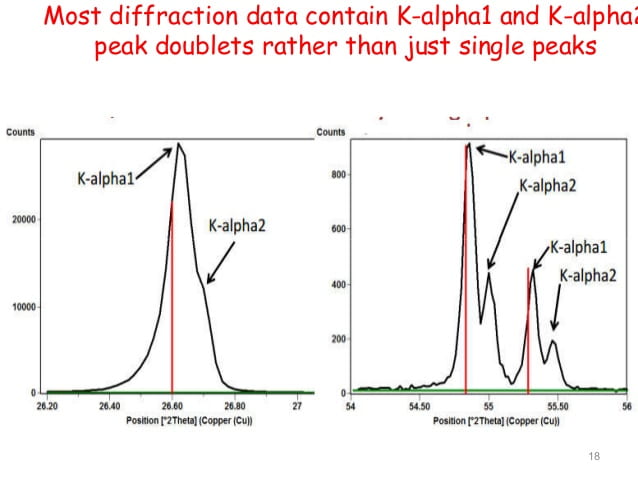Multi-technique X-Ray Diffraction Platform
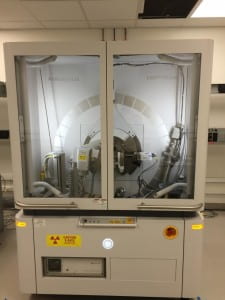
The Malvern PANalytical Empyrean generates x-rays, directs them toward the sample, and the diffracted rays are collected. A key component of diffraction is the angle between the incident and the diffracted beam.
The collected data are widely used for the identification of unknown crystalline materials (e.g. minerals, inorganic compounds). Determination of unknown solids is critical to studies in geology, environmental science, material science, engineering and biology.
To reserve time or request training on this tool, click here to go to the Empyrean tool page on SUMS.
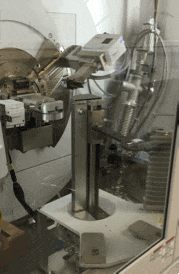 |
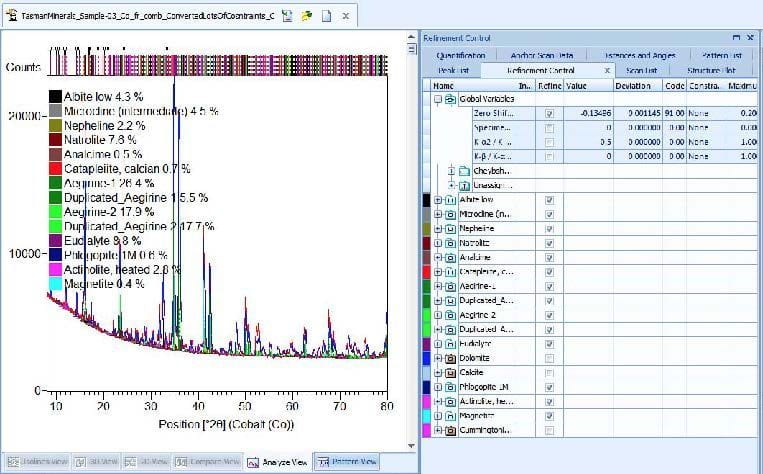 |
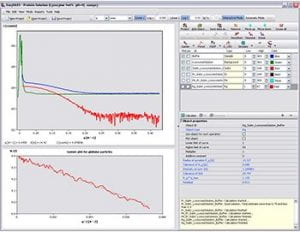 |
| The Empyrean has an autosampler that works with our reflection-transmission spinner. It is capable of holding up to fifteen samples and is ideal for users that have a lot of material that can fit within our holders. | Complex multi-phase powders can be identified. Data analysis is performed using HighScore Plus provided by Malvern PANalytical using PDF 4+ Database from ICDD. | Small Angle X-Ray Scattering (SAXS) can be used to determine size and volume distribution. |
[expand title="System Details:"]
All x-ray diffraction systems have three components. An x-ray source, sample holder stage, and a detector. There are a number of sources with various properties and wavelengths, the Empyrean has a copper anode with a Kα of 1.54184 Å.
The system has a number of stages allowing for the measurement of powders or solid materials of different shapes and sizes.
Chi-Phi-Z Stage
- Sample Size: If your material is a solid that is smaller than 4″ in width and less than 2.5″ in height, then your sample will work with this stage. An integrated camera allows users to center the beam onto their sample.
- Capabilities: Allows for measurements of residual stress or for the phase identification of crystalline material for samples that don’t fit in the holders that work with the Reflection-Transmission spinner. Glancing angle experiments for examination of the phases of thin films on top of a substrate can also be performed.
Reflection-Transmission spinner
- Sample Size: For powders, we have have a number of back-filled powder holders available in 16mm and 27mm size as well as zero background holders. For users with many samples and a large amount of material, we also have an autosampler capable of loading and unloading your samples.
- Capabilities: Phase identification of powders, or of solid samples that are less than 27mm in length and 4mm in height.
Anton-Parr 1200N Hot Stage
- Sample Size: For powders, or solids, our hot stage is capable of reaching 1200 degrees Celcius for determination of phase change as a function of
- Capabilities: In-situ measurement of phase changes as a function of temperature. Samples can be analyzed under argon or vacuum.
[/expand]
[expand title = “Performance Check Results:“]
NIST Reference Sample Analyzed on May 16, 2021
NIST Reference Sample Analyzed in June 2019
NIST Reference Sample Analyzed in March 2019
[/expand]
Files that can be downloaded:
Instructions for Powder or Small Solid Phase ID (Word Document)
Instructions for Residual Stress (Word Document)
Anton-Parr 1200N Hot Stage SOP (Word Document)
Setting PHD Levels in Data Collector (Word Document)
Spreadsheet for Optics Determination (Excel Worksheet)
NIST Reference Material (1976b)
External Links:
Malvern PANalytical Empyrean – Users can access technical information, application notes, whitepapers, webinars and more in the Knowledge Center
Small Angle X-Ray Scattering (SAXS) – Users can get access from Malvern PANalytical with more information about this technique.

